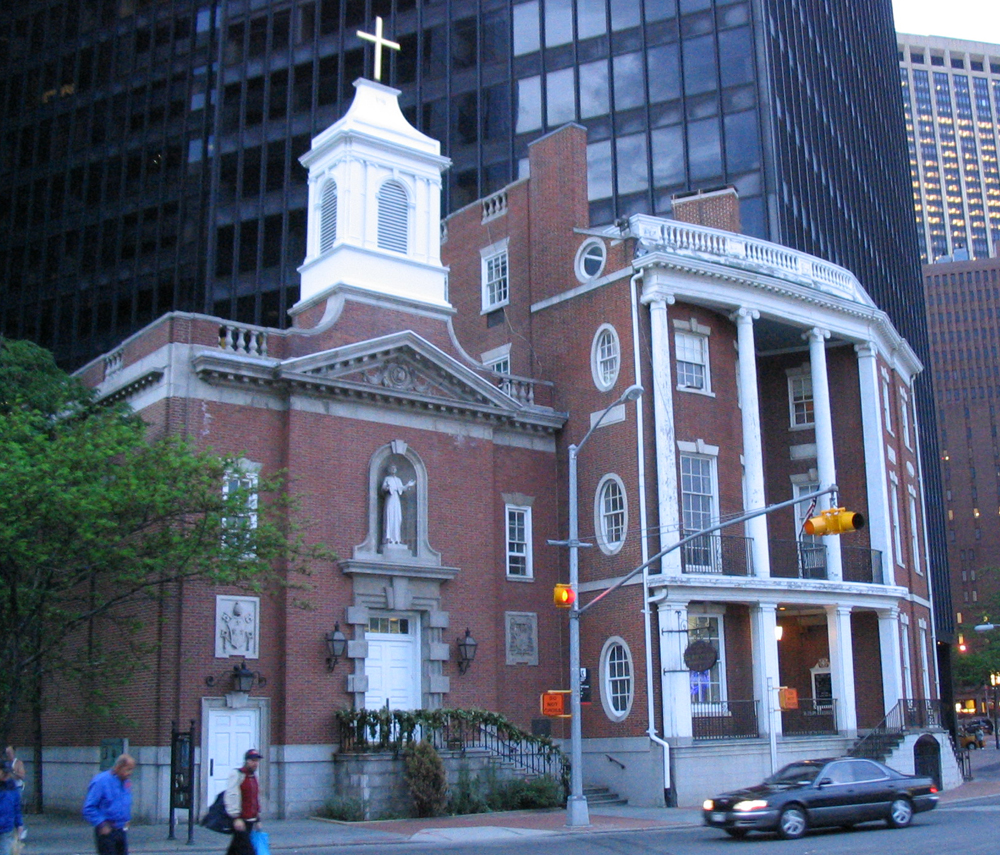- James Watson House
Infobox_nrhp | name =Watson, James, House
nrhp_type = nrhp

caption =
location= 7 State Street,Manhattan ,New York, New York , USA
lat_degrees = 40
lat_minutes = 42
lat_seconds = 9.04
lat_direction = N
long_degrees = 74
long_minutes = 0
long_seconds = 50.77
long_direction = W
locmapin = New York
area =
built =1793
architect=John McComb
architecture= Georgian, FederalDolkart, Andrew S. & Postal, Matthew A.; "Guide to New York City Landmarks", 3rd Edition; New York City Landmarks Preservation Commission; John Wiley & Sons, Inc. 2004. ISBN 0-471-36900-4; p.8.]
added =July 24 ,1972
governing_body = Private
refnum=72000891cite web|url=http://www.nr.nps.gov/|title=National Register Information System|date=2007-01-23|work=National Register of Historic Places|publisher=National Park Service]James Watson House (currently part of the Shrine of Saint Elizabeth Ann Seton) was built in 1793 at 7 State Street,
Manhattan ,New York City ,USA . It is located at the very tip of Manhattan Island. It was the family home ofElizabeth Ann Seton , the first American Saint, and is now the site of aRoman Catholic shrine in her honor.It is a
New York City Landmark .Once home of wealthy merchant James B. Watson, this typical Federal Style rowhouse is the only extant residence in this area. Like other merchants of 18th and early 19th century New York City, Watson chose to live near the river in order to have an unobstructed harbor view and to be in close proximity to his shipping interests. The eastern portion (1793) which follows the line of the street was executed by an unknown architect, while the curved western portion (1806) has been attributed to the sophisticated architect, John McComb Jr. Following the Civil War, the house was purchased by Irish immigrant Charlotte Grace O'Brien to serve as the Mission of Our Lady of the Rosary, a waystation for young immigrant girls.
The Watson residence is the sole survivor of the elegant Federal style row houses that lined State Street and lower Broadway in the late eighteenth and early nineteenth centuries. The original part of the Watson house is the eastern half; the porticoed western half, built in 1806, is ascribed to James McComb, Jr., the first native-born architect, is a brilliant solution to the problem of fitting a rowhouse to an irregular site and letting light into a deep floor plan. When the Watson residence was built it overlooked New York harbor across a promenade with unobstructed view of the hills of Staten Island, New Jersey and Brooklyn. State Street was a popular choice for the homes of prosperous sea captains and merchants who could view the ships that abounded in the harbor. Today the Watson house is occupied by the Rectory of the Church of Our Lady of the Rosary.
Once part of a row of late-eighteenth-century mansions, this sole survivor recalls the time when New York's wealthiest families lived at Manhattan's southern tip. With their northward exodus, the building functioned as a hotel until 1886, when purchased by Irish immigrant Charlotte Grace O'Brien to become the Mission of Our Lady of the Rosary, a home for immigrant girls.
A 1965 restoration of the mission removed the dormers and added a railing at the roofline. With the 1940 demolition of the El and the 1960s proliferation of box-and-plaza skyscrapers, the mansion now seems stranded on a too-wide street amidst oversized neighbors. In 1975, the mission was dedicated as the Rectory of the Shrine of St. Elizabeth Seton, after America's first canonized saint, who was born on Staten Island.
References
External links
* [http://www.nyc-architecture.com/LM/LM019-SHRINEOFST.ELIZABETHANNBAYLEYSETON.htm nyc-architecture.com]
* [http://www.flickr.com/photos/wallyg/2367083991/]
Wikimedia Foundation. 2010.
